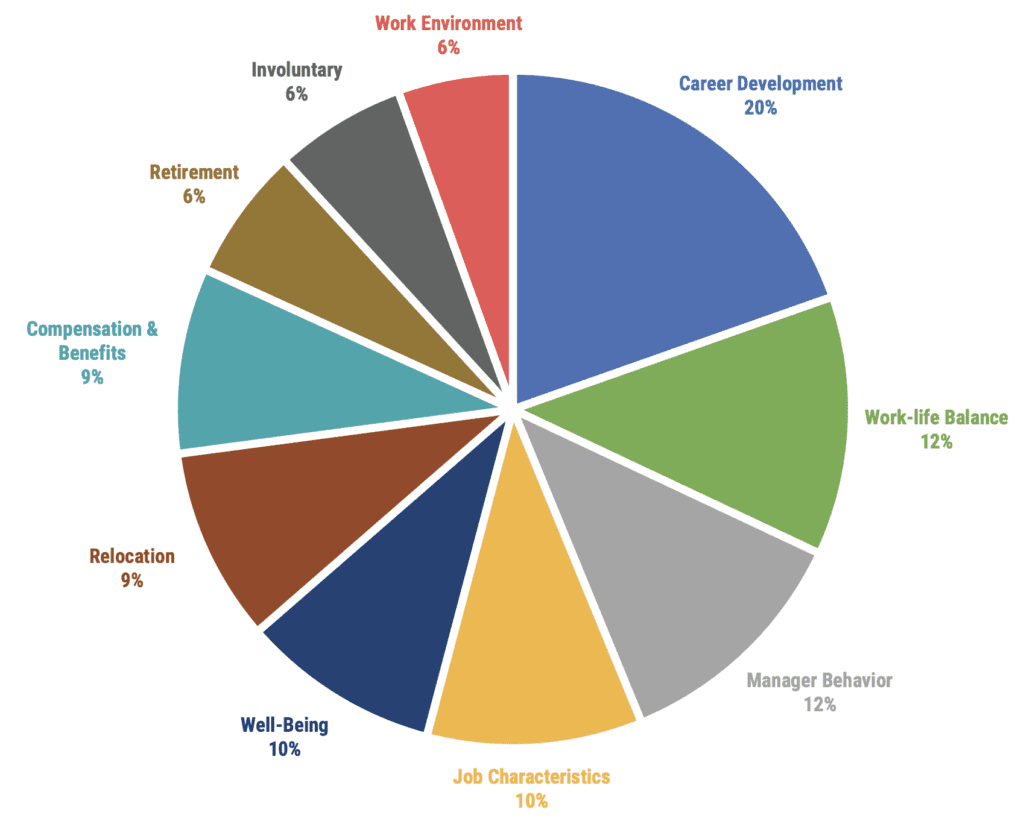
Employee turnover costs employers more than $630 billion annually, according to The Work Institute’s 2020 Retention Report. While CIOs search for solutions for retaining great employees and keeping their companies successful, gamification may offer concrete strategies that can show measurable results.
Gamification is sometimes oversimplified as reimagining one’s mundane tasks as fun goals or exciting challenges. However, in addition to making daily work more entertaining, gamifying work encourages engagement in activities and improves the memories of those participating.
Is gamification the right step?
The 2020 Retention Report notes the drive for career development caused 20 out of 100 employees to quit in 2019. The report separately states that “Career Development has been the #1 Category for ten straight years,” and that the opportunity to advance would have kept them with the company.

Considering the primary importance of career development in retention, gamification can play a critical and cost-effective role in connecting employees with the skills and industry knowledge they need to excel within the company and their career fields.
Gamification fast-tracks upskilling.
TELUS International’s CIO Michael Ringman points to gamification as the key to quickly and effectively upskilling employees.
“The various learning programs we offer, such as our Global Language Academy and MyGrowth are offered virtually and in many cases are accessible on mobile devices to enable our global team to access them from anywhere at any time.”
“By evolving words on a page into engaging, multi-sensory experiences such as simulations, virtual role playing and leaderboard scoring, gamification encourages employees to complete training modules more quickly while also gaining a deeper understanding of the subject matter by experiencing it at their own pace and in a more immersive fashion.
“When we allocate badges as rewards, give employees the ability to create their own avatars, and provide real-time visualized progress bars, we have seen impactful boosts in engagement and productivity that ultimately drive career progression and employee retention.”
“In 2020, we achieved world-class employee engagement scores of 86% and continue to consistently achieve 50% lower attrition rates vs. our competitors.”
“Gamification is an important factor for employee retention in the digital environment, where they earn points, status, and rewards as they improve their skills to achieve company goals and objectives,” says Caroline Lee, co-founder of CocoSign. On-the-spot learning is a powerful tool used to “make the workplace more exciting and increase employee retention.” And gamifying employee retention can be broadened through a whole structure, or tailored to improve a specific department.
Managing a team of 70 software designers and engineers, ISBX president Arthur Iinuma says that interactive leaderboards create friendly competition in his company to “increase employee productivity and foster more engagement in the workplace.”
“We have found that gamification has incentivized problem-solving in terms of developing new products and meeting customers’ needs. Gamification has offered intellectual stimulation, encouraging increased employee engagement and performance. Team-based gamification has forged stronger bonds between team members.” Iinuma estimates overall productivity has increased “in the region of 20 percent due to gamification.”
Gamification encourages retirement savings.
“Our employees are an extended family, and we want to do as much as we can to retain them,” said Bruce Watkins, founder and CEO of Cal Preserving, Inc.
“We previously offered our employees a 401k plan. We found the experience was horrible because of the complexity of administering it. So we recently moved to a new provider, Xiggit. It’s a low-cost, simple web-based IRA program that handles the ongoing retirement savings administration for us.
“We didn’t set out to offer any gamification to retain employees but the app has a gamified tool (Learn ‘n Earn) that informs employees about our company’s benefits and improves their financial knowledge. They earn a little in the daily game but, more importantly, it’s improved their money habits.
“Some employees can’t believe how much money they’ve saved in such a short period of time. Our workers feel differently about our company because of these benefits and their financial stress is lower. We know that employee retention will improve.”
Ultimately, any CIO mulling some sort of gamifying strategy should make sure that they ask the right questions: Does this new approach prompt greater yields in employees? Does the gamified aspect reduce training and upskilling to a relentless slog to beat a point system? To be a worthwhile return on investment, gamification must grow the team member’s overall skill set, in a way that is both engaging and that leads to enhanced job satisfaction.